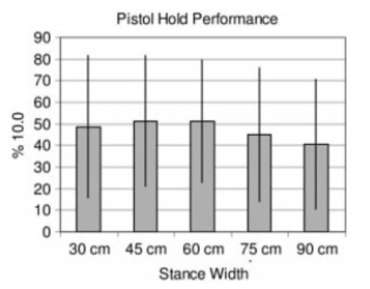“Psychological Effects of Combat”
By Dave Grossman and Bruce K. Siddle
THE PSYCHOLOGICAL EFFECT OF COMBAT is a concept which encompasses a wide variety of processes and negative impacts, all of which must be taken into consideration in any assessment of the immediate and long term costs of war. This entry will address the wide-spectrum psychological effects of combat, to include:
-
Psychiatric casualties suffered during combat
-
Physiological arousal and fear
-
The physiology of close combat
-
The price of killing
-
Post-Traumatic Stress Disorder (PTSD)
Introduction: A Legacy of Lies
An examination of the psychological effects of combat must begin by acknowledging that there are some positive aspects to combat. Throughout recorded history these positive aspects have been emphasized and exaggerated in order to protect the self-image of combatants, o honor the memory of the fallen and rationalize their deaths, to aggrandize and glorify political leaders and military commanders, and to manipulate populations into supporting war and sending their sons to their deaths. But the fact that these positive aspects have been manipulated and exploited does not deny their existence. There is a reason for the powerful attraction of combat over the centuries, and there is no value in going from the dysfunctional extreme of glorifying war to the equally dysfunctional extreme of denying its attraction.
The ability to recognize and confront danger, the powerful group bonding that occurs in times of stress, the awe-inspiring spectacle of a nation focused and aligned to achieve a single aim, selfless dedication to abstract concepts and goals, and the ability to overcome the powerful imperatives of the survival instinct and willingly die for others: these common aspects of war represent both important survival traits and a potentially positive comment on basic human nature. But if war does have a capacity for reflecting some usually hidden, positive aspects of humanity, it irrefutably does so at a great and tragic cost.
One obvious and tragic price of war is the toll of death and destruction. But there is an additional cost, a psychological cost borne by the survivors of combat, and a full understanding of this cost has been too long repressed by a legacy of self-deception and intentional misrepresentation. After peeling away this “legacy of lies” that has perpetuated and glorified warfare there is no escaping the conclusion that combat, and the killing that lies at the heart of combat, is an extraordinarily traumatic and psychologically costly endeavor that profoundly impacts all who participate in it.
This psychological cost of war is most readily observable and measurable at the individual level. At the national level, a country at war can anticipate a small — but statistically significant — increase in the domestic murder rate, probably due to the glorification of violence and the resultant reduction in the level of “repression” of natural aggressive instincts which Freud held to be essential to the existence of civilization. At the group level, even the most elite unit is usually psychologically destroyed when between 50 and 60% casualties have been inflicted, and the integration of the individual into the group is so strong that this destruction often leads to depression and suicide. However, the nation (if not eliminated by the war) is generally resilient, and the group (if not destroyed) is inevitably disbanded. But the individual who survives combat may well end up paying a profound psychological cost for a lifetime. The cumulative impact of these effects on hundreds of thousands of veterans is pervasive, with significant potential to have a profound effect on society at large.
Psychiatric Casualties in War
Richard Gabriel has noted that: “Nations customarily measure the ‘costs of war’ in dollars, lost production, or the number of soldiers killed or wounded.” But, “rarely do military establishments attempt to measure the costs of war in terms of individual suffering. Psychiatric breakdown remains one of the most costly items of war when expressed in human terms.” Indeed, for the combatants in every major war fought in this century, there has been a greater probability of becoming a psychiatric casualty than of being killed by enemy fire.
A psychiatric casualty is a combatant who is no longer able to participate in combat due to mental (as opposed to physical) debilitation. Psychiatric casualties seldom represent a permanent debilitation, and with proper care they can be rotated back into the line. (However, Israeli research has demonstrated that, after combat, psychiatric casualties are strongly predisposed toward the more long-term and more permanently debilitating manifestation of Post-Traumatic Stress Disorder.)
The actual casualty can manifest itself in many ways, ranging from affective disorders to somatoform disorders, but the treatment for the many manifestations of combat stress involves simply removing the soldier from the combat environment. But the problem is that the military does not want to simply return the psychiatric casualties to normal life, it wants to return them to combat. And these casualties are understandably reluctant to do so.
The evacuation syndrome is the paradox of combat psychiatry. A nation must care for its psychiatric casualties, since they are of no value on the battlefield (indeed, their presence in combat can have a negative impact on the morale of other combatants) and they can still be used again as valuable seasoned replacements once they have recovered from combat stress. But if combatants begin to realize that insane combatants are being evacuated, the number of psychiatric casualties will increase dramatically.
Continued “proximity” to the battlefield (through forward treatment, usually within enemy artillery range) combined with an “expectancy” of rapid return to combat, are the principles developed to overcome the paradox of the evacuation syndrome. These principles of proximity and expectancy have proven themselves quite effective since World War I. They permit the psychiatric casualty to get the rest that is the only current cure for his problem, while not giving a message to still healthy comrades that insanity is a ticket away from the madness of the battlefield.
But even with the careful application of the principles of proximity and expectancy the incidence of psychiatric casualties is still enormous. During World War II, 504,000 men were lost from America’s combat forces due to psychiatric collapse–enough to man 50 divisions. The United States suffered this loss despite efforts to weed out those mentally and emotionally unfit for combat by classifying more than 800,000 men 4-F (unfit for military service) due to psychiatric reasons. At one point in World War II, psychiatric casualties were being discharged from the U.S. Army faster than new recruits were being drafted in.
Swank and Marchand’s World War II study of US Army combatants on the beaches of Normandy found that after 60 days of continuous combat, 98% of the surviving soldiers had become psychiatric casualties. And the remaining 2% were identified as “aggressive psychopathic personalities.” Thus it is not too far from the mark to observe that there is something about continuous, inescapable combat which will drive 98% of all men insane, and the other 2% were crazy when they got there. Figure 1 presents a schematic representation of the effects of continuous combat.
It must be understood that the kind of continuous, protracted combat that produces such high psychiatric casualty rates is largely a product of 20th-century warfare. The Battle of Waterloo lasted only a day. Gettysburg lasted only three days–and they took the nights off. It was only in World War I that armies began to experience months of 24-hour combat, and it is in World War I that vast numbers of psychiatric casualties were first observed.
The democratic nations of this century have been better than most at admitting and dealing with their combat psychiatric casualties, and information from non-Western sources is extremely limited, but we now know that America’s World War II experience is representative of a universal cost of modern, protracted warfare. Armies around the world have experienced similar mass psychiatric casualties, but many have simply driven these casualties into battle at bayonet point, shooting those who refused or were unable to continue. Japanese units in World War II employed a unique set of powerful cultural and group processes to delay psychiatric breakdown, but they only succeeded in temporarily delaying the cost of combat, a cost that eventually manifested itself in mass suicide. Ultimately the toll of modern combat is truly fearful, and no nation or culture has been able to escape it.
Physiological Arousal and Fear
The soldier in combat endures many indignities. Among these can be endless months and years of exposure to desert heat, sweltering jungle, torrential rains, or frozen mountains and tundras. Usually the soldier lives amidst swarming vermin. Very often there is lack of food, lack of sleep, and the constant uncertainty that eats away at the combatants’ sense of control over their lives and their environment. But, bad as they are, all of these stressors can be found in many cultural, geographic, or social circumstances, and when the ingredient of war is removed individuals exposed to these circumstances do not suffer mass psychiatric casualties.
To fully comprehend the intensity of the stress of combat, we must keep these other stressors in mind while understanding the body’s physiological response to combat, as manifested in the sympathetic nervous system’s mobilization of resources. And then we must understand the impact of the parasympathetic nervous system “backlash” that occurs as a result of the demands placed upon it. The sympathetic nervous system (SNS) mobilizes and directs the body’s energy resources for action. It is the physiological equivalent of the body’s front-line soldiers who actually do the fighting in a military unit. The parasympathetic nervous system is responsible for the body’s digestive and recuperative processes. It is the physiological equivalent of the body’s cooks, mechanics, and clerks who sustain a military unit over an extended period of time.
Usually the body maintains itself in a state of homeostasis, which ensures that these two nervous systems maintain a balance between their demands upon the body’s resources. But during extremely stressful circumstances the “fight-or-flight” response kicks in and the SNS mobilizes all available energy for survival. This is the physiological equivalent of throwing the cooks, mechanics, and clerks into the battle. This process is so intense that soldiers very often suffer stress diarrhea due to redirecting of energies from nonessential parasympathetic processes, and it is not at all uncommon to lose control of urination and defecation as the body literally ‘blows its ballast” and redirects all available energy in an attempt to provide the resources required to ensure survival. This is reflected in World War II surveys in which a quarter of combat veterans admitted that they urinated in their pants in combat, and a quarter admitted that they defecated in their pants in combat.
A combatant must pay a physiological price for an enervating process so intense. The “price” that the body pays is an equally powerful “backlash” when the neglected demands of the parasympathetic nervous system become ascendant. This parasympathetic backlash occurs as soon as the danger and the excitement is over, and it takes the form of an incredibly powerful weariness and sleepiness on the part of the soldier.
Napoleon stated that the moment of greatest danger was the instant immediately after victory, and in saying so he demonstrated a powerful understanding of the way in which soldiers become physiologically and psychologically incapacitated by the parasympathetic backlash that occurs as soon as the momentum of the attack has halted and the soldier briefly believes himself to be safe. During this period of vulnerability a counterattack by fresh troops can have an effect completely out of proportion to the number of troops attacking.
It is basically for this reason that the maintenance of an “unblown” reserve has historically been essential in combat, with battles often revolving around which side can hold out and deploy their reserves last. Clausewitz understood the danger of reserve forces becoming prematurely enervated and exhausted (and he provides insight into the root cause of the enervation) when he cautioned that the reserves should always be maintained out of sight of the battle.
In continuous combat the soldier roller-coasters through a seemingly endless series of these surges of adrenaline and their subsequent backlashes, and the body’s natural, useful, and appropriate response to danger ultimately becomes extremely counterproductive. Unable to flee, and unable to overcome the danger through a brief burst of fighting, posturing, or submission, the bodies of modern soldiers in sustained combat exhaust their capacity to enervate. They slide into a state of profound physical and emotional exhaustion of such a magnitude that it appears to be almost impossible to communicate it to those who have not experienced it.
Most observers of combat lump the impact of this physiological arousal process under the general heading of ‘fear,” but fear is really a cognitive or emotional label for nonspecific physiological arousal in response to a threat. The impact of fear and its attendant physiological arousal is significant, but it must be understood that fear is just a symptom and not the disease, it is an effect but not the cause. To truly understand the psychological effects of combat, we must understand exactly what it is that causes this intense fear response in individuals. It has become increasingly clear that there are two key, core stressors causing the psychological toll associated with combat. These stressors are: the trauma associated with being the victim of close-range, interpersonal aggression; and the trauma associated with the responsibility to kill a fellow human being at close range.
The Trauma of Close-Range, Interpersonal Aggression
During World War II the carnage and destruction caused by months of continuous German bombing in England, and years of Allied bombing in Germany, was systematically inflicted in order to create psychological casualties among civilian populations. Day and night, in an intentionally unpredictable pattern, civilians, relatives and friends were mutilated, killed and their homes were destroyed. These civilian populations suffered fear and horror of a magnitude that few humans will ever experience.
This unpredictable, uncontrollable reign of shock, horror, and terror is exactly what psychiatrists and psychologists prior to World War II believed to be responsible for the vast numbers of psychiatric casualties suffered by soldiers in World War I. And yet, incredibly, the Rand Corporation’s Strategic Bombing Study published in 1949 found that there was only a very slight increase in the psychological disorders in these populations as compared to peacetime rates and that these occurred primarily among individuals already predisposed to psychiatric illness. These bombings, which were intended to break the will of the population, appear to have served primarily to harden the hearts and increase the determination to fight among those who endured them.
The impact of fear, physiological arousal, horror, and physical deprivation in combat should never be underestimated, but it has become clear that other factors are responsible for psychiatric casualties among combatants. One of those factors is the impact of close-range, interpersonal, aggressive confrontation.
Through roller-coasters, action and horror movies, drugs, rock climbing, whitewater rafting, scuba diving, parachuting, hunting, contact sports, and a hundred other means, modern society pursues fear. Fear in and of itself is seldom a cause of trauma in everyday peacetime existence, but facing close-range interpersonal aggression and hatred from fellow citizens is a horrifying experience of an entirely different magnitude.
The ultimate fear and horror in most modern lives is to be raped, tortured, or beaten, to be physically degraded in front of loved ones or to have the sanctity of the home invaded by aggressive and hateful intruders. The Diagnostic and Statistical Manual of the American Psychiatric Association affirms this when it notes that Post-Traumatic Stress Disorder (PTSD) . . . may be especially severe or longer lasting when the stressor is of human “design.” PTSD resulting from natural disasters such as tornadoes, floods, and hurricanes is comparatively rare and mild, but acute cases of PTSD will consistently result from torture or rape. Ultimately, like tornadoes, floods, and hurricanes, bombs from 20,000 feet are simply not “personal” and are significantly less traumatic to both the victim and aggressor.
Death or debilitation is statistically far more likely to occur by disease or accident than by malicious action, but statistics have nothing to do with fear. Statistically speaking, cigarette smoking is an extraordinarily dangerous activity that annually inflicts slow, hideous deaths upon millions of individuals worldwide, but this fact does not dissuade millions of individuals from smoking, and around the globe few nations are motivated to pass laws to protect their citizens from this threat. But the presence of one serial rapist in a large city can change the behavior of hundreds of thousands of individuals, and there is a broad tradition of laws designed to protect citizens from rape, assault, and murder.
When snakes, heights, or darkness cause an intense fear reaction in an individual it is considered a phobia, a dysfunction, an abnormality. But it is very natural and normal to respond to an attacking, aggressive fellow human being with a phobic-scale response. This is a universal human phobia. More than anything else in life, it is intentional, overt human hostility and aggression that assaults the self-image, sense of control and ultimately, the mental and physical health of human beings.
The soldier in combat is inserted straight into the inescapable midst of this most psychologically traumatic of environments. Ultimately, if the combatant is unable get some respite from the trauma of combat, and if not injured or killed, the only escape available is the psychological escape of becoming a psychiatric casualty and mentally fleeing the battlefield.
The Physiology of Close Combat
An understanding of the stress of close combat begins with an understanding of the physiological response to close-range interpersonal aggression. The traditional view of combat stress is most often associated with combat fatigue and Post-Traumatic Stress Disorder, which are actually manifestations that occur after, and as a result of, combat stress. Bruce Siddle has defined combat stress as the perception of an imminent threat of serious personal injury or death, or when tasked with the responsibility to protect another party from imminent serious injury or death, under conditions where response time is minimal.
The debilitating effects of combat stress have been recognized for centuries. Phenomenon such as tunnel vision, auditory exclusion, the loss of fine and complex motor control, irrational behavior, and the inability to think clearly have all been observed as byproducts of combat stress. Even though these phenomena have been observed and documented for hundreds of years, very little research has been conducted to understand why combat stress deteriorates performance.
The key characteristic which distinguishes combat stress is the activation of the SNS. The SNS is activated when the brain perceives a threat to survival, resulting in a immediate discharge of stress hormones. This “mass discharge” is designed to prepare the body for fight-or-flight. The response is characterized by increasing arterial pressure and blood flow to large muscle mass (resulting in increased strength capabilities and enhanced gross motor skills–such as running from or charging into an opponent), vasoconstriction of minor blood vessels at the end of appendages (which serves to reduce bleeding from wounds), pupil dilation, cessation of digestive processes, and muscle tremors. Figure 2 (below) presents a schematic representation of the effects of hormone induced heart rate increase resulting from SNS activation.
The activation of the SNS is automatic and virtually uncontrollable. It is a reflex triggered by the perception of a threat. Once initiated, the SNS will dominate all voluntary and involuntary systems until the perceived threat has been eliminated or escaped, performance deteriorates, or the parasympathetic nervous system activates to reestablish homeostasis.
The degree of SNS activation centers around the level of perceived threat. For example, low-level SNS activation may result from the anticipation of combat. This is especially common with police officers or soldiers minutes before they make a tactical assault into a potential deadly force environment. Under these conditions combatants will generally experience increases in heart rates and respiration, muscle tremors, and a psychological sense of anxiety.
In contrast, high-level SNS activation occurs when combatants are confronted with an unanticipated deadly force threat and the time to respond is minimal. Under these conditions the extreme effects of the SNS will cause catastrophic failure of the visual, cognitive, and motor control systems. Although there are endless variables that may trigger the SNS, there are six key variables that have an immediate impact of the level of SNS activation. These are the degree of malevolent, human intent behind the threat; the perceived level of threat, ranging from risk of injury to the potential for death; the time available to response; the level of confidence in personal skills and training; the level of experience in dealing with the specific threat; and the degree of physical fatigue that is combined with the anxiety.
Once activated, the SNS causes immediate physiological changes, of which the most noticeable and easily monitored is increased heart rate. SNS activation will drive the heart rate from an average of 70 beats per minute (BPM) to more than 200 BPM in less than a second. As combat stress increases, heart rate and respiration will increase until catastrophic failure, or until the parasympathetic nervous system is triggered.
In 1950, S.L.A. Marshall’s The Soldier’s Load and the Mobility of a Nation was one of the first studies to identify how combat performance deteriorates when soldiers are exposed to combat stress. Marshall concluded that we must reject the superstition that under danger men can be expected to have more than their normal powers, and that they will outdo their best efforts simply because their lives are in danger. Indeed, in many ways, the reality is just the opposite and individuals under stress are far less capable of doing anything other than blindly running from or charging toward a threat. Humans have three primary survival systems: vision, cognitive processing, and motor skill performance. Under stress, all three break down.
Bruce K. Siddle’s landmark research at PPCT involved monitoring the heart rate responses of law enforcement officers in interpersonal conflict simulations using paintball-type simulation weapons. This research has consistently recorded heart rate increases to well over 200 beats per minute, with some peak heart rates of up to 300 beats per minute. These were simulations in which the combatants knew that their life was not in danger. The combatant, in a true life-and-death situation (whether soldier or law enforcement officer), faces the ultimate universal human phobia of interpersonal aggression and will certainly experience a physiological reaction even greater than that of Siddle’s subjects. The fundamental truth of modern combat is that the stress of facing close-range interpersonal aggression is so great that, if endured for months on end without any other means of respite or escape, the combatant will inevitably become a psychiatric casualty.
Even greater than the resistance to being the victim of close-range aggression is the combatant’s powerful aversion to inflicting aggression on fellow human beings. At the heart of this dread is the average healthy person’s resistance to killing one’s own kind.
A Resistance to Killing
The kind of psychiatric casualties usually identified with long-term exposure to combat are notably reduced among medical personnel, chaplains, officers, and soldiers on reconnaissance patrols behind enemy lines. The key factor that is not present in each of these situations is that, although they are in the front lines and the enemy may attempt to kill them, they have no direct responsibility to participate personally in close-range killing activities. Even when there is equal or even greater danger of dying, combat is much less stressful if you do not have to kill.
The existence of a resistance to killing lies at the heart of this dichotomy between killers and nonkillers. This is an additional, final stressor that the combatant must face. To truly understand the nature of this resistance of killing we must first recognize that most participants in close combat are literally “frightened out of their wits.” Once the bullets start flying, combatants stop thinking with the forebrain, which is the part of the brain which makes us human, and start thinking with the midbrain, or mammalian brain, which is the primitive part of the brain that is generally indistinguishable from that of an animal.
In conflict situations this primitive, midbrain processing can be observed in the existence of a powerful resistance to killing one’s own kind. During territorial and mating battles, animals with antlers and horns slam together in a relatively harmless head-to-head fashion, rattlesnakes wrestle each other, and piranha fight their own kind with flicks of the tail, but against any other species these creatures unleash their horns, fangs, and teeth without restraint. This is an essential survival mechanism that prevents a species from destroying itself during territorial and mating rituals.
One major modern revelation in the field of military psychology is the observation that this resistance to killing one’s own species is also a key factor in human combat. Brigadier General S.L.A. Marshall first observed this during his work as the official US historian of the European Theater of Operations in World War II. Based on his post-combat interviews, Marshall concluded in his landmark book, Men Against Fire, that only 15 to 20% of the individual riflemen in World War II fired their weapons at an exposed enemy soldier. Specialized weapons, such as a flame-thrower, usually were fired. Crew-served weapons, such as a machine gun, almost always were fired. And firing would increase greatly if a nearby leader demanded that the soldier fire. But, when left to their own devices, the great majority of individual combatants throughout history appear to have been unable or unwilling to kill.
Marshall’s findings have been somewhat controversial. Faced with scholarly concern about a researcher’s methodology and conclusions, the scientific method involves replicating the research. In Marshall’s case, every available, parallel, scholarly study validates his basic findings. Ardant du Picq’s surveys of French officers in the 1860s and his observations on ancient battles, Keegan and Holmes’ numerous accounts of ineffectual firing throughout history, Richard Holmes’ assessment of Argentine firing rates in the Falklands War, Paddy Griffith’s data on the extraordinarily low killing rate among Napoleonic and American Civil War regiments, the British Army’s laser reenactments of historical battles, the FBI’s studies of nonfiring rates among law enforcement officers in the 1950s and 1960s, and countless other individual and anecdotal observations all confirm Marshall’s fundamental conclusion that man is not, by nature, a killer.
The exception to this resistance can be observed in sociopaths who, by definition, feel no empathy or remorse for their fellow human beings. Pit bull dogs have been selectively bred in order to ensure that they will perform the unnatural act of killing another dog in battle. Similarly, human sociopaths represent Swank and Marchand’s 2% who did not become psychiatric casualties after months of continuous combat, since they were not disturbed by the requirement to kill. But sociopaths would be a flawed tool that is impossible to control in peacetime, and social dynamics make it very difficult for humans to breed themselves for such a trait. However, humans are very adept at finding mechanical means to overcome natural limitations. Humans were born without the physical ability to fly, so we found mechanisms that overcame this limitation and enabled flight. Humans also were born without the psychological ability to kill our fellow humans. So, throughout history, we have devoted great effort to finding a way to overcome this resistance. From a psychological perspective, the history of warfare can be viewed as a series of successively more effective tactical and mechanical mechanisms to enable or force combatants to overcome their resistance to killing.
Overcoming the Resistance to Killing
By 1946 the US Army had accepted Marshall’s conclusions, and the Human Resources Research Office of the US Army subsequently pioneered a revolution in combat training that eventually replaced firing at bullseye targets with deeply ingrained “conditioning” using realistic, man-shaped, pop-up targets that fall when hit. Psychologists know that this kind of powerful “operant conditioning” is the only technique that will reliably influence the primitive, midbrain processing of a frightened human being, just as fire drills condition terrified school children to respond properly during a fire, and repetitious, “stimulus-response” conditioning in flight simulators enables frightened pilots to respond reflexively to emergency situations.
Throughout history the ingredients of groups, leadership, and distance have been manipulated to enable and force combatants to kill, but the introduction of conditioning in modern training was a true revolution. The application and perfection of these basic conditioning techniques increased the rate of fire from near 20% in World War II to approximately 55% in Korea and around 95% in Vietnam. Similar high rates of fire resulting from modern conditioning techniques can be seen in FBI data on law enforcement firing rates since the nationwide introduction of modern conditioning techniques in the late 1960s. Figure 3 presents a schematic representation of the interaction between the killing enabling factors that have been manipulated throughout history, including the key, modern ingredient of conditioning.
One of the most dramatic examples of the value and power of this modern, psychological revolution in training can be seen in Richard Holmes’ observations of the 1982 Falklands War. The superbly trained (i.e., “conditioned”) British forces were without air or artillery superiority and consistently outnumbered three-to-one while attacking the poorly trained but well-equipped and carefully dug-in Argentine defenders. Superior British firing rates (which Holmes estimates to be well over 90%), resulting from modern training techniques, has been credited as a key factor in the series of British victories in that brief but bloody war. Any future army that attempts to go into battle without similar psychological preparation is likely to meet a fate similar to that of the Argentines.
The Price of Overcoming The Resistance to Killing
The extraordinarily high firing rate resulting from modern conditioning processes was a key factor in America’s ability to claim that US ground forces never lost a major engagement in Vietnam. But conditioning that overrides such a powerful, innate resistance carries with it enormous potential for psychological backlash. Every warrior society has a “purification ritual” to help returning warriors deal with their “blood guilt” and to reassure them that what they did in combat was “good.” Features of the ritual are a “group therapy” session and a ceremony embracing the veteran back into the tribe. Modern Western rituals traditionally involve long periods while marching or sailing home, parades, monuments, and the unconditional acceptance from society and family.
Table I outlines some of the key factors in the killing experience rationalization and acceptance processes, using the example of US troops in Vietnam as a case study of an extreme circumstance in which the purification rituals broke down. For example, combatants do not do what they do in combat for medals, they are motivated largely by a concern for their comrades, but after the battle medals serve as a kind of “Get Out of Jail Free Card”: a powerful talisman that proclaims to them and to others that what the combatant did was honorable and acceptable. Although medals were issued after Vietnam, the social environment was such that veterans could not wear the medals or their uniforms in public. Similarly, the young combatant needs the presence of mature, older comrades to seek guidance and support from, but in Vietnam, especially in the peak years of the war, the average age of the combatant was probably less than during any other war in US history. Other key factors unique to the American experience in Vietnam include the absence of any truly safe, secure area in-country. Also, the individual replacement system that hampered bonding and ensured that soldiers often arrived and left as strangers. The use of aircraft to immediately return veterans to America, without the usual cool-down, group therapy period, which has been experienced for thousands of years as veterans sailed or marched home.
For America’s Vietnam veterans the purification ritual was largely denied, and a host of studies have demonstrated that one of the the most significant causal factors in Post-Traumatic Stress Disorder is the lack of support structure after the traumatic event, which in this case occurred when the returning veteran was attacked and condemned in an unprecedented manner. The traditional horrors of combat were magnified by modern conditioning techniques, combining the nature of the war with an unprecedented degree of societal condemnation. This created a circumstance of Post-Traumatic Stress Disorder (PTSD) among the 3.5 million US veterans of Southeast Asia. Estimations are between 0.5 and 1.5 million cases, although the results of these studies vary greatly. This mass incidence of psychiatric disorders among Vietnam veterans resulted in the “discovery” of PTSD, a condition that we now know has always occurred as a result of warfare, but never before in this quantity. Armies around the world have integrated these lessons from Vietnam, and in Britain’s Falklands War, Israel’s 1982 Lebanon incursion, and in the U.S.’s Gulf War the lessons of Vietnam and the need for the purification ritual have been closely and carefully considered and applied. In the former U.S.S.R.’s Afghanistan War this need was again ignored, and the resulting social turmoil was a one of the factors that eventually led to the collapse of that nation. Indeed, the Weinberger Doctrine, later referred to as the Powell Doctrine, which holds that the United States will not engage in a war without strong societal support, is a reflection of the tragic lessons learned from the psychological effects of combat in Vietnam.
PTSD is a psychological disorder resulting from a traumatic event. PTSD manifests itself in persistent re-experiencing of the traumatic event, numbing of emotional responsiveness, and persistent symptoms of increased arousal, resulting in clinically significant distress or impairment in social and occupational functioning. There is often a long delay between the traumatic event and the manifestation of PTSD. Among Vietnam veterans in the United States, PTSD has been strongly linked with greatly increased divorce rates, increased incidence of alcohol and drug abuse, and increased suicide rates. Indeed, Veterans Administration data indicate that, as of 1996, three times more Vietnam veterans have died from suicide after the war than died from enemy action during the war, and this number is increasing every year.
But PTSD seldom results in violent criminal acts, and US Bureau of Justice Statistics research indicates that veterans, including Vietnam veterans, are statistically less likely to be incarcerated than a nonveteran of the same age. The key safeguard in this process appears to be the deeply ingrained discipline which the soldier internalizes with military training. However, with the advent of interactive “point-and-shoot” arcade and video games there is significant concern that society is aping military conditioning, but without the vital safeguard of discipline. There is strong evidence to indicate that the indiscriminate civilian application of combat conditioning techniques as entertainment may be a key factor in worldwide, skyrocketing violent crime rates, including a sevenfold increase in per capita aggravated assaults in America since 1956. Thus, the psychological effects of combat can increasingly be observed on the streets of nations around the world.
Conclusion: A Cultural Conspiracy
It is essential to acknowledge that good ends have been and will continue to be accomplished through combat. Many democracies owe their very existence to successful combat. Few individuals will deny the need for combat against Nazi Germany and Imperial Japan in World War II. And around the world the price of civilization is paid every day by military units on peacekeeping operations and domestic police forces who are forced to engage in close combat. There have been and will continue to be times and places where combat is unavoidable, but when a society requires its police and armed forces to participate in combat it is essential to fully comprehend the magnitude of the inevitable psychological toll.
It is often said that “All’s fair in love and war,” and this expression provides a valuable insight into the human psyche, since these twin, taboo fields of sexuality and aggression represent the two realms in which most individuals will consistently deceive both themselves and others. Our psychological and societal inability to confront the truth about the effects of combat is the foundation for the cultural conspiracy of repression, a deception and denial that has helped to perpetuate and propagate war throughout recorded history.
In the field of developmental psychology a mature adult is sometimes defined as someone who has attained a degree of insight and self-control in the two areas of sexuality and aggression. This is also a useful definition of maturity in civilizations. Thus two important and reassuring trends in recent years have been the development of the science of human sexuality, which has been termed “sexology,” and a parallel development of the science of human aggression, which D. Grossman has termed “killology.” There is universal consensus that continued research in this previously taboo realm of human aggression is vital to the future development, and perhaps to the very existence, of our civilization.
Glossary of Terms…..”Psychological Effects of Combat”
-
Evacuation Syndrome: The paradox of combat psychiatry. Psychiatric casualties must be treated, but if soldiers begin to realize that psychiatric casualties are being evacuated, the number of psychiatric casualties will increase dramatically.
-
Fear: A cognitive or emotional label for nonspecific physiological arousal in response to a threat.
-
Midbrain: Sometimes referred to as the mammalian brain, it is the primitive part of the brain that is generally indistinguishable from that of any other mammal. During times of extreme stress cognition tends to localize in this portion of the brain.
-
Operant Conditioning: Training that prepares an organism to react to a specific stimulus with a specific voluntary motor response. Operant conditioning is highly effective in preparing individuals to respond with desired actions in highly stressful circumstances.
-
Parasympathetic Nervous System: The branch of the autonomic nervous system that is responsible for the body’s digestive and recuperative processes.
-
Post-Traumatic Stress Disorder (PTSD): A psychological disorder resulting from a traumatic event. PTSD manifests itself in persistent re-experiencing of the traumatic event, numbing of emotional responsiveness, and persistent symptoms of increased arousal, resulting in clinically significant distress or impairment in social and occupational functioning. There is often a long delay time between the traumatic event and the manifestation of PTSD. PTSD has been strongly linked with greatly increased divorce rates, increased suicide rates, and increased incidence of alcohol and drug abuse.
-
Psychiatric Casualty: A combatant who is no longer able to participate in combat due to mental (as opposed to physical) debilitation.
-
Purification Ritual: A set of symbolic social mechanisms that help returning veterans to come to terms with their actions in combat and successfully integrate back into peacetime society.
-
Sympathetic Nervous System (SNS): The branch of the autonomic nervous system that mobilizes and directs the body’s energy resources for action.
Bibliography ….. “Psychological Effects of Combat”
-
Gabriel, R. A. (1987). No more Heroes: Madness and psychiatry in war. New York: Hill and Wang.
-
Greene, B. (1989). Homecoming. New York: G. P. Putnam’s Sons.
-
Griffith, P. (1989). Battle tactics of the (American) civil war. London.
-
Grossman, D. (1995, 1996). On killing: The psychological cost of learning to kill in war and society. New York: Little, Brown, and Co.
-
Holmes, R. (1985). Acts of war: the behavior of men in battle. New York: The Free Press.
-
Keegan, J. (1976). The face of battle. Harmondsworth, England: The Chaucer Press.
-
Keegan, J., & Holmes, R. (1985). Soldiers. London: Hamish Hamilton.
-
Marshal, S. LA. (1978). Men against fire. Gloucester, MA: Peter Smith.
-
Siddle, B. K. (1995). Sharpening the warrior’s edge: The psychology and science of training. Millstadt, IL: PPCT Management Systems.
-
Swank, R. L., & Marchand, W. E. (1946). Combat neuroses: development of combat exhaustion. Archives of Neurology and Psychology, 55, 236-247.
©1999 by Academic Press. All rights of reproduction in any form reserved.
Context:
Entry in Scholarly Reference; Grossman, D., & Siddle, B.K., “Psychological Effects of Combat,” in Encyclopedia of Violence, Peace and Conflict, Academic Press, 2000.
Extraído de https://www.killology.com/psychological-effects-of-combat em 05/04/2020 15h






